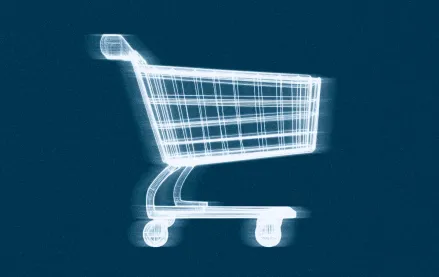Save 50% on a 3-month Digiday+ membership. Ends Dec 5.
Media Buying Briefing: IPG and its many challenges (and opportunities)

This Media Buying Briefing covers the latest in agency news and media buying for Digiday+ members and is distributed over email every Monday at 10 a.m. ET. More from the series →
Less than two full months into 2025 — and with something like four to six months before its acquisition by Omnicom is consummated (if it’s consummated) — Interpublic Group is experiencing challenges on an almost-unprecedented level. But the payoff in the end could be worth the trouble, since a merged company would easily be the biggest purveyor of principal media, which regardless of one’s opinions on the ethics of the practice, can make a holding company a lot of money.
Here’s a walk-through of those challenges and opportunities IPG has in store.
Unimpressive earnings
The agency holding company released 2024 full-year earnings that showed lackluster growth, with 2025 not looking any better. (Dentsu also released its numbers and they’re no better — see below in Takeoff & landing.) Net revenue was $9.19 billion, a 2.3% drop from full year 2023. Organic revenue was a flatlined 0.2%, although on the less negative side, the company’s operating margin held steady at 16.6%, largely in line with other holdcos.
Philippe Krakowsky, IPG’s CEO, was at least realistic. “Solid new business momentum in the fourth quarter and early 2025 will begin to come online later this year, though it will not offset sizable client losses incurred last year due largely to changes in the media trading environment,” he said in prepared comments announcing the results. He acknowledged that organic revenue for 2025 will drop as much as 2%. But also pointed to recent media wins with Amgen, Little Caesar’s and Volvo.
Krakowsky also announced a $250 million restructure that is sure to deliver a global culling of staff and other cost-efficiency moves that goes beyond even the 10,000 expected to be cut in Omnicom CEO John Wren’s $750 million savings plan. “The benefits of this restructuring have limited overlap with the cost synergies identified as part of the Omnicom acquisition,” acknowledged Krakowsky.
The real reason for the union
Upon completion of the acquisition by Omnicom, IPG stands to win at the game of principal media buying, and that high-level source confirmed it is a primary motivator for doing the deal. A united OmniPublic will easily eclipse current principal media leader Publicis Groupe in size and scale of principal media investment.
“The real, immediate impetus for this deal is owning inventory and principal buying,” said the high-level source. “If you’re going to try to win in principal [media] against Publicis, if you’re Omnicom, you’re never going to be the top dog [unless you get bigger]. This is the way you get there. That’s why both sides did the deal in the end … That’s how you’re going to make money for shareholders.”
Krakowsky effectively confirmed in comments during the earnings announcement that the lack of principal media had a hand in client losses. “We were on the wrong side of the outcome in defending a number of very significant media accounts,” he said. “It’s worth reminding everyone that the decisive factor on those largest decisions was principal media, and specifically the commercial terms enabled by principal media at scale.”
Promotions and raises shifted to July
Insiders and former insiders said staff, from the rank and file to svp and evp levels, are flooding other agencies with resumes in hopes of finding new employ before being let go as part of that $1 billion in savings. (Again, see below for a high-level UM departure.)
One ex-IPGer now at an independent media agency said he’s received an influx of calls and texts from a variety of IPG personnel looking for new job opportunities. And he pointed to an internal shift that’s got many IPGers scared.
Digiday examined a document from Mediabrands U.S. CEO Justin Wroe detailing a new employee review policy that shifts all reviews for all IPG employees to July 1. Anyone hired after Jan. 1 of this year doesn’t get to participate in the review process, which was shifted from April 1.
“Interpublic is implementing one consistent Merit Review cycle across all networks and agencies worldwide,” read the document. “Starting this year, all salary adjustments will have an effective date of July 1.”
“People hear the $750 million — and then the $250 million — and resumes start flying around,” said the ex-IPG exec. “And we have a bunch of open roles, and we’re seeing a lot of of stuff coming out of IPG. Then Justin [Wroe] sends around that note about delaying raises and people started texting me and saying, ‘Gee, it seems odd that the timing for reviews is going to shift to around the time the merger likely gets approved.’”
An IPG spokesman confirmed that Mediabrands issued the directive, noting that the holdco is ensuring global alignment of HR processes.
Color by numbers
The explosion of media channels and choices available to agencies and brands has led to the need for improved omnichannel campaign management. But a survey conducted in January by Advertiser Perceptions and ADvendio shows just how much more difficult it’s gotten. The survey of 305 marketers and agencies spending at least $1 million annually ID’d the three most challenging aspects of omnichannel campaign management: attribution modeling (the top concern for 25% of respondents), connecting online/offline data (17%) and performance optimization (15%). Other stats:
- 63% of respondents reported having a general-to-high understanding of ad tech; 36% say they have moderate to no understanding.
- As far as comfort level with ad tech, 58% said they were mostly to very comfortable using it, while 42% reported moderately to not at all comfortable.
Takeoff & landing
- Dentsu’s 2024 earnings results were as “meh” as IPG’s. Despite net revenue growth of 5.7%, organic growth outside of Japan (where the holdco dominates) was -4.1% in the Americas, -7% in the rest of APAC and only 2.2% in EMEA. Estimates for 2025 call for 1% organic growth and a relatively anemic margin of 12%.
- Publicis Groupe landed pretty much all of Goodyear’s marketing work, as the tire maker consolidated its varied regional work into one holding company. Although details are scant, Goodyear said that some 60 agencies will be affected by the consolidation.
- In yet another holding company move to get deeper into sports marketing, Stagwell purchased Gold Rabbit Sports, a global sports marketing agency. The new acquisition will sit inside Stagwell’s experiential agency TEAM.
- In brand safety news, Zefr expanded its pre-impression content avoidance controls on Meta, enabling advertisers to determine full transparency into where their ads were served across Meta platforms.
- Personnel moves: Mediaplus Group hired John Wittesaele, most recently global CEO of Xaxis, to be COO of international markets. Meanwhile, in the U.S., Mediaplus hired Meredith Robinson as its new director of media, coming from PHD where she was associate director of strategic media planning … Brainlabs hired Andy Littlewood, former chief product officer at UM Worldwide to be its chief planning and data officer.
Direct quote
“By integrating with The Trade Desk, Shopify, and Instacart, Roku is expanding its advertising ecosystem, making CTV ad placements more accessible to smaller advertisers. While its CPMs remain lower than Netflix and YouTube, this pricing strategy enhances its appeal to a broader advertiser base … While the transition to a platform-driven business model is promising, Roku faces challenges in capturing a larger share of advertising budgets. Many advertisers still prioritize platforms with premium content libraries like Netflix, Disney+, and Amazon Prime Video. Additionally, the growing competition from short-form video platforms, such as TikTok and YouTube Shorts, is diverting consumer screen time away from traditional streaming.”
— Albie Amankona, analyst at research firm Third Bridge, commenting on Roku’s prospects as it alters its ad business model
Speed reading
- I wrote about how Media By Mother’s CEO used generative AI to assemble a pitch largely by himself over the holidays for a major global client — and made it past the RFI stage.
- I also wrote about Publicis Sports’ new commitment to women’s sports through a dedicated unit called Women’s Sports Connect.
- And I covered CourtAvenue’s latest acquisition, a Ukrainian chatbot maker called Bots Crew, which is leveraging generative AI to improve functionality for enterprise clients.
- Sam Bradley looked at the rise of FAST channels through the prism of Tubi’s success streaming the Super Bowl.
More in Media Buying

Overheard in the Media Agency Report: How Assembly, IPG, Horizon and others use AI and will spend on ads in 2026
In this is behind-the-scenes look at Digiday’s 2025 Media Agency Report, ad execs discuss how the GDP and international sports could impact 2026 spend and how agencies and their clients are actually applying AI tools.

Instacart tripled its smart cart store count this year
Instacart’s smart carts are in triple the number of stores this year than they were in 2024, the company told Modern Retail.

Intended or not, the new Omnicom will forever change agencies as we’ve known them
The world’s largest agency holding company is born. But there may come a day soon where it can no longer be called an agency, but rather a broker and re-seller.







